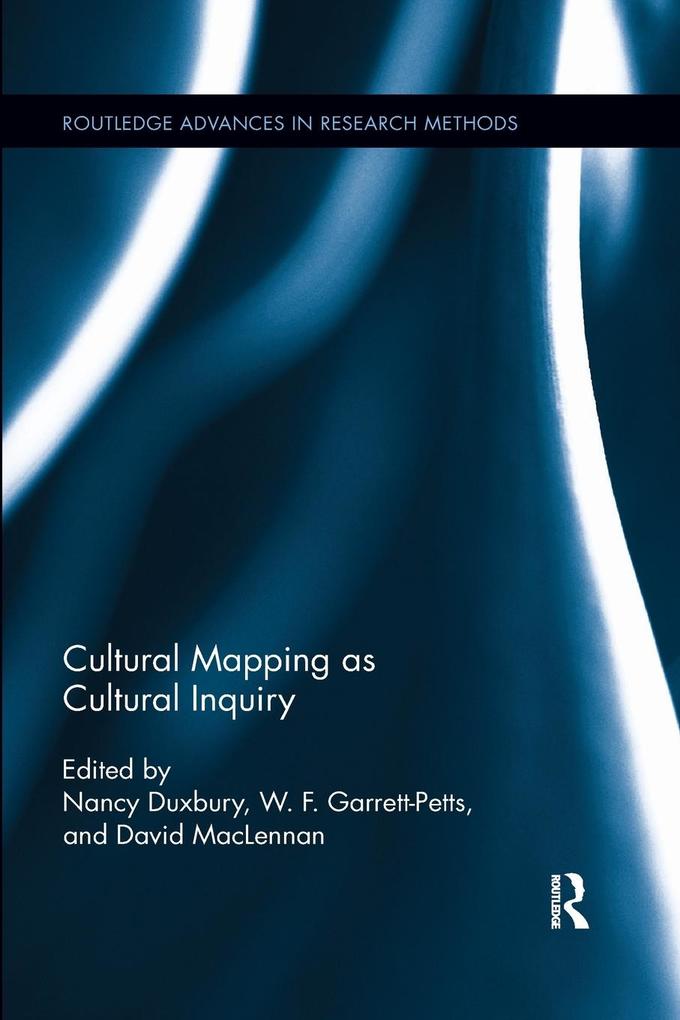
Zustellung: Mo, 11.11. - Do, 14.11.
Versand in 6 Tagen
VersandkostenfreiBestellen & in Filiale abholen:
This book provides an introduction to the emerging and interdisciplinary field of cultural mapping, making a case for and demonstrating the spatial turn emerging in many related areas of critical, social and artistic research. Contributors explore innovative ways to encourage artistic intervention and public participation in cultural mapping-rec
This edited collection provides an introduction to the emerging interdisciplinary field of cultural mapping, offering a range of perspectives that are international in scope. Cultural mapping is a mode of inquiry and a methodological tool in urban planning, cultural sustainability, and community development that makes visible the ways local stories, practices, relationships, memories, and rituals constitute places as meaningful locations. The chapters address themes, processes, approaches, and research methodologies drawn from examples in Australia, Canada, Estonia, the United Kingdom, Egypt, Italy, Malaysia, Malta, Palestine, Portugal, Singapore, Sweden, Syria, the United Arab Emirates, the United States, and Ukraine. Contributors explore innovative ways to encourage urban and cultural planning, community development, artistic intervention, and public participation in cultural mapping-recognizing that public involvement and artistic practices introduce a range of challenges spanning various phases of the research process, from the gathering of data, to interpreting data, to presenting "findings" to a broad range of audiences. The book responds to the need for histories and case studies of cultural mapping that are globally distributed and that situate the practice locally, regionally, nationally, and internationally.
Inhaltsverzeichnis
1. Cultural Mapping as Cultural Inquiry: Introduction to an Emerging Field of Practice Nancy Duxbury, W. F. Garrett-Petts and David MacLennan Part I: Mapping the Contours of an Emerging Field 2. Cultural Mapping and Planning for Sustainable Communities Graeme Evans 3. One Strategy, Many Purposes: A Classification for Cultural Mapping Projects Leonardo Chiesi and Paolo Costa 4. Cultural Mapping: Analyzing Its Meanings in Policy Documents Eleonora Redaelli 5. Cultural Mapping in Ontario: The Big Picture M. Sharon Jeannotte Part II: Platforms for Engagement and Knowledge Through Mapping 6. Wedjemup Wangkiny Koora, Yeye and Mila Boorda (Wedjemup Talking from the Past, Today, and the Future): An Ex-Modern Way of Thinking and Mapping Landscape into Country? Len Collard and Grant Revell 7. Understanding the Full Impact of Cultural Mapping in Ukraine Linda Knudsen McAusland and Olha Kotska 8. Engaging Public, Professionals, and Policy-Makers in the Mapping Process Janet Pillai 9. Mapping Cultures: Spatial Anthropology and Popular Cultural Memory Les Roberts and Sara Cohen 10. "Reading the City": Cultural Mapping as Pedagogic Inquiry Stuart Burch 11. City Readings and Urban Mappings: The City as Didactic Instrument Paulo Providência Part III: Inquiry, Expression, and Deepening Understanding of Place 12. Time, Aggregation, and Analysis: Designing Effective Digital Cultural Mapping Projects Elaine Sullivan and Willeke Wendrich 13. Beyond Paper Maps: Archeologies of Place Abby Suckle and Seetha Raghupathy 14. Mapping the Complexity of Creative Practice: Using Cognitive Maps to Follow Creative Ideas and Collaborations Roberta Comunian and Katerina Alexiou 15. From Work to Play: Making Bodies in Flight's Performance Walk Dream work Sara Giddens and Simon Jones 16. Maraya as Visual Research: Mapping Urban Displacement and Narrating Artistic Inquiry Glen Lowry, M. Simon Levin and Henry Tsang (Maraya) 17. Beyond the Brochure: An Unmapped Journey into Deep Mapping Kathleen Scherf
Produktdetails
Erscheinungsdatum
30. Juni 2020
Sprache
englisch
Seitenanzahl
396
Reihe
Routledge Advances in Research Methods
Herausgegeben von
Nancy Duxbury, W. F. Garrett-Petts, David Maclennan
Verlag/Hersteller
Produktart
kartoniert
Gewicht
572 g
Größe (L/B/H)
229/152/21 mm
Sonstiges
Paperback
ISBN
9780367599003
Entdecken Sie mehr
Pressestimmen
'The quality of the writing in an edited volume can vary, but the essays in this collection are consistently good. The editors state that the goal of cultural mapping is to make visible the local stories, rituals, relationships, practices, meanings, and memories that shape the spirit of place. In that way the authors are successful, and academics or cultural workers seeking to gain a deeper understanding of place should find these case studies useful.'- Phil Birge-Liberman, University of Connecticut, Social & Cultural Geography
'Duxbury, Garrett-Petts and MacLennan have edited a volume on the method of cultural mapping which
can be regarded as a central book for cultural policy research.' - Louise Ejgod Hansen, Aarhus University, The Nordic Journal of Cultural Policy
Taken as a whole, Cultural Mapping as Cultural Inquiry explores a variety of mapping practices and logics to inform and inspire cultural planning. Mapping emerges as at once epistemological and deeply ontological, a mode of representation and a set of claims. The contributors take seriously the concern that mapping may reinforce existing power relations and systematic oppression.
Andrew Zitcer (2016) Review of "Cultural Mapping as Cultural Inquiry," edited by Nancy Duxbury, W. F. Garrett-Petts, and David MacLennan, The Journal of Arts Management, Law, and Society, 46:5, 297-299, DOI: 10. 1080/10632921. 2016. 1194795
Bewertungen
0 Bewertungen
Es wurden noch keine Bewertungen abgegeben. Schreiben Sie die erste Bewertung zu "Cultural Mapping as Cultural Inquiry" und helfen Sie damit anderen bei der Kaufentscheidung.









